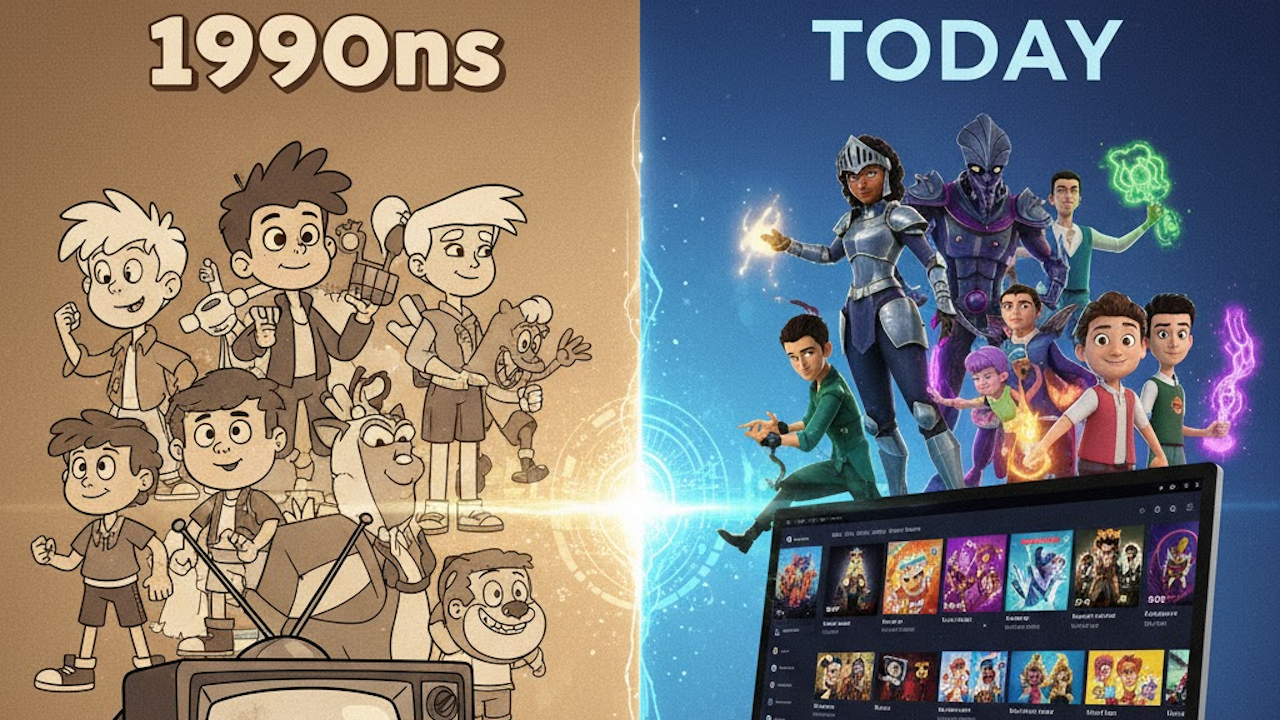The landscape of animation has undergone a seismic shift since the days of dial-up internet and VHS tapes. For those who grew up with the vibrant, often irreverent, and sometimes simplistic cartoons of the 1990s, the current animated offerings might seem like a different species altogether. From production techniques to storytelling sophistication, and from target demographics to distribution models, nearly every aspect of cartoon creation and consumption has been revolutionized.
The Rise of Sophistication in Storytelling
One of the most profound changes is the evolution of narrative complexity. 90s cartoons, while beloved, often adhered to episodic formats where plots largely reset at the end of each installment. Shows like Rugrats, Dexter’s Laboratory, or Animaniacs thrived on self-contained adventures, character driven humor, and rarely delved into overarching plotlines that spanned seasons.
Today’s animation, however, frequently embraces serialized storytelling. Cartoons such as Steven Universe, Avatar The Last Airbender (which began in the mid-2000s but set a precedent for modern animation), She-Ra and the Princesses of Power, and The Dragon Prince are meticulously crafted with continuous narratives, complex character arcs, and world building that rivals live action fantasy epics. This shift reflects a growing respect for animation as a medium capable of tackling mature themes, intricate mythology, and emotional depth, appealing to both children and adults.
Technological Advancements and Visual Styles
The aesthetic of cartoons has also transformed dramatically. The 90s were largely dominated by traditional 2D hand drawn animation. While this style produced iconic visuals, it was a labor intensive process with inherent limitations in terms of camera movement and intricate details.
The advent and widespread adoption of digital animation tools, including Flash animation and eventually sophisticated 3D rendering software, opened up a new universe of possibilities. Many modern cartoons seamlessly blend 2D and 3D elements, allowing for dynamic camera angles, expressive character movements, and richly detailed environments that were once prohibitively expensive or impossible to achieve. The visual fluidity and stylistic diversity of contemporary animation are a direct result of these technological leaps, giving creators more freedom to experiment with unique artistic visions.
Expanding Target Demographics
While 90s cartoons were primarily aimed at children, with some notable exceptions that garnered adult followings through clever writing (think The Simpsons or Ren and Stimpy), modern animation has actively diversified its target audience. The rise of “adult animation” has been significant, with shows like BoJack Horseman, Rick and Morty, Big Mouth, and Arcane tackling mature themes, dark humor, and complex social commentary.
Beyond adult animation, there’s also a noticeable trend of creating “all ages” animation that appeals to a broad spectrum. These shows avoid talking down to children while still offering layers of humor and thematic depth that resonate with older viewers. This inclusivity recognizes that animation is an art form not confined by age, challenging previous assumptions about its primary purpose.
The Impact of Distribution Models
Perhaps one of the most disruptive changes is in how cartoons are consumed. The 90s were the era of network television, with cartoons relegated to specific time slots like Saturday mornings or weekday afternoons. Viewers had to tune in at a particular time or rely on recording with VCRs.
The rise of streaming services like Netflix, Hulu, HBO Max, and Disney+ has completely overhauled this model. Viewers now have unprecedented access to vast libraries of content, available on demand. This shift has not only influenced viewership patterns but also production strategies. Services are commissioning original animated content at an unprecedented rate, fostering a competitive environment that encourages innovation and creative risk taking. Binge watching has become the norm, perfectly suiting serialized narratives and allowing creators to craft longer story arcs without worrying about weekly ratings drops.
Increased Diversity and Representation
Reflecting broader societal changes, modern cartoons have made significant strides in diversity and representation. While 90s cartoons often featured predominantly white casts and traditional family structures, contemporary animation is consciously striving for more inclusive portrayals.
Characters come from a wider range of ethnic backgrounds, demonstrate diverse sexual orientations and gender identities, and showcase varied body types and abilities. This push for representation not only makes animation more reflective of the real world but also allows more viewers to see themselves positively portrayed on screen, fostering a sense of belonging and understanding. This move towards inclusivity enriches the storytelling and provides valuable role models for younger audiences.
Looking Ahead
The transformation of cartoons since the 90s is a testament to the dynamic nature of creative industries. What was once seen as primarily children’s entertainment has blossomed into a sophisticated art form capable of tackling a myriad of genres, themes, and emotional landscapes. As technology continues to evolve and new platforms emerge, the future of animation promises even more innovative storytelling, breathtaking visuals, and a continued expansion of its audience, far beyond the nostalgic Saturday mornings of yesteryear.

